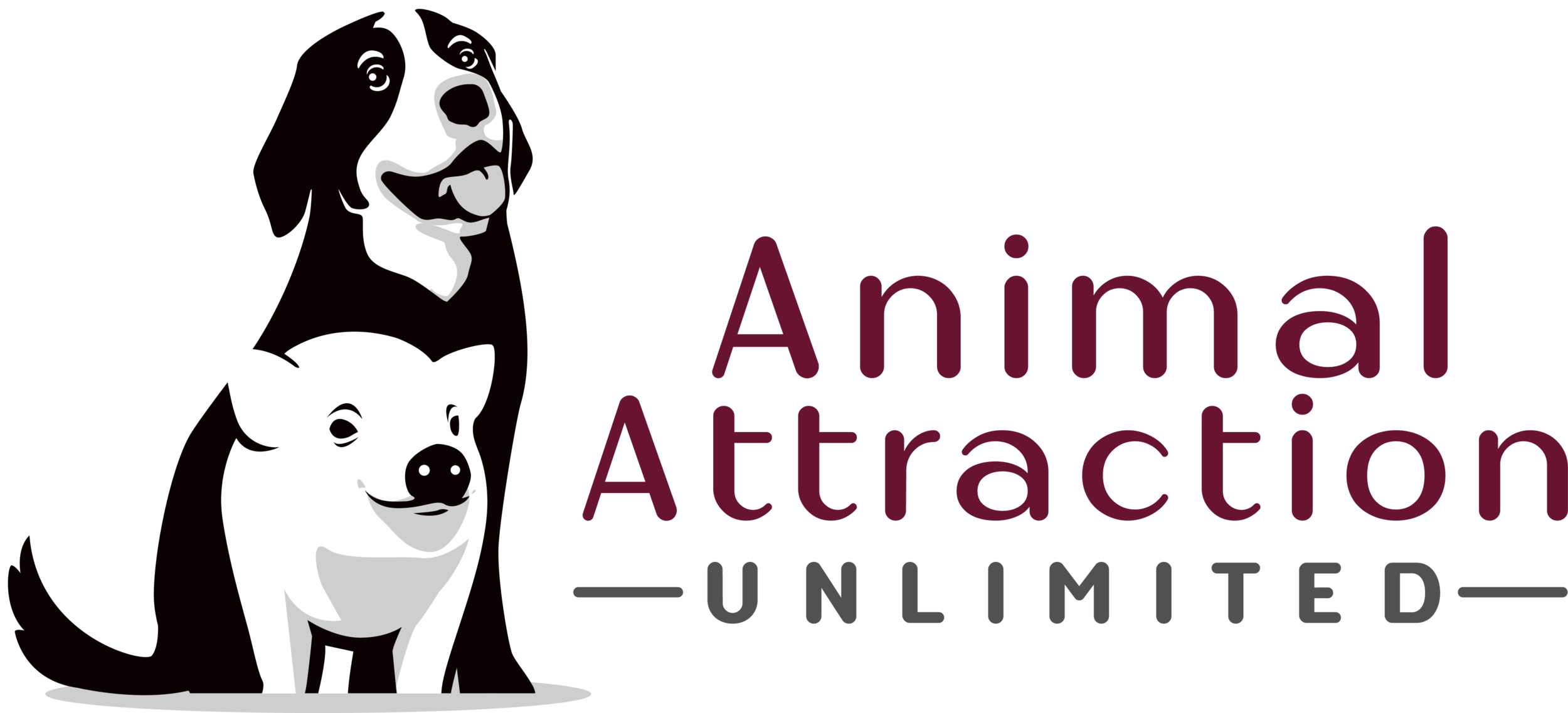Tug O’ War
Kim & Laura are usually on the same page with regards to training, but when it comes to playing tug with dogs they have differing opinions. Tug is a mutual killing game where you are a teammate with your dog killing the toy; it is not you against your dog fighting for the toy. However, just as with any game there are very specific rules for playing tug. Laura likes to play tug and teaches clients how to play it with their dogs, on the other hand, Kim does not like to play tug. So today Kim takes Laura systematically through the rules of tug to give you a clear understanding of how best to play it with your dogs and use it in training situations.
One big rule for tug is to make the dog work for it. Meaning, before you offer the toy ask him to do something like sit, down, spin, shake, etc... Basically, anything he knows how to do can be asked for before offering the toy for play. Begin the game by asking your dog to do something for you. Once he does the behavior say “yep” and “take it” or “get it”. After he is playing make sure you move the toy in a side to side manner, not up & down so his feet come off the floor, and not by pushing into him and compressing his neck. The former is because we don’t want your dog getting into a state of arousal and coming up into your face, and the latter is because you could injure your dog by compressing his neck.
The key to this game is not to make the toy a valuable object your dog will want to guard. This means you are keeping your body language and voice soft and your facial expression happy/smiling. If you get tense or raise your voice it will increase the value of the object, which in turn will make the dog less likely to give it up when asked. Tug is a great way to teach a “give” or “mine” cue; we prefer those cues to the more common “drop it”. When using the words “drop it” people tend to use a harsher tone of voice which raises the value of the toy. The impression you are giving the dog by using a harsh tone is that you are now willing to fight for the toy, making it less likely he will let go of it. If you already use “drop it” as a cue we suggest you shorten it to “drop”.
To teach the “give” cue make sure you have a good piece of food nearby or in your pocket. Once your dog is tugging slyly pick up a treat, say “give”, stop moving the toy and place the food at your dog’s nose. Wait a couple of seconds for your dog to realize there is food and then move the treat a few inches away. As soon as your dog releases the toy to take the treat put the toy behind your back and let him have the food. Once you do this many times your dog will start to anticipate the treat and release the toy as soon as you say “give”. In addition to stopping the toy’s movement after saying “give” you should also change your facial expression from smiling & happy to blank. This helps to clearly indicate to the dog that you are no longer playing a game. All movement has stopped and your face is blank which sends the dog a very clear message. Remember to stop pulling on the toy as well because if you keep pulling on the toy your body language says you’re still playing the game regardless of the word you said. Begin the game again by asking your dog to do something for you. Once he does say “yep” and “take it” or “get it”.
Occasionally there is a dog that prefers the toy over the food. In those cases, you can use 2 toys of equal value and perform the same “give” exercise as above.
Most dogs who like to play tug have a difficult time giving the toy up. Of course, it’s more reinforcing for us to play tug if the dog doesn’t give up the toy easily. This means we are more likely to allow our dogs to play tug longer and thus have fewer opportunities to practice giving. Rather than having your dog tug for 3 minutes and asking for one “give”, you should start by tugging for only a few seconds and then ask your dog to “give”. This means your dog is getting reinforced more for giving up the toy than he is for playing tug. When this happens, it increases the likelihood your dog will give up the toy in the future.
As an aside, growling during tug is perfectly normal because if you watch 2 dogs playing with a toy you will hear them growl and in the majority of circumstances it doesn’t mean anything.
